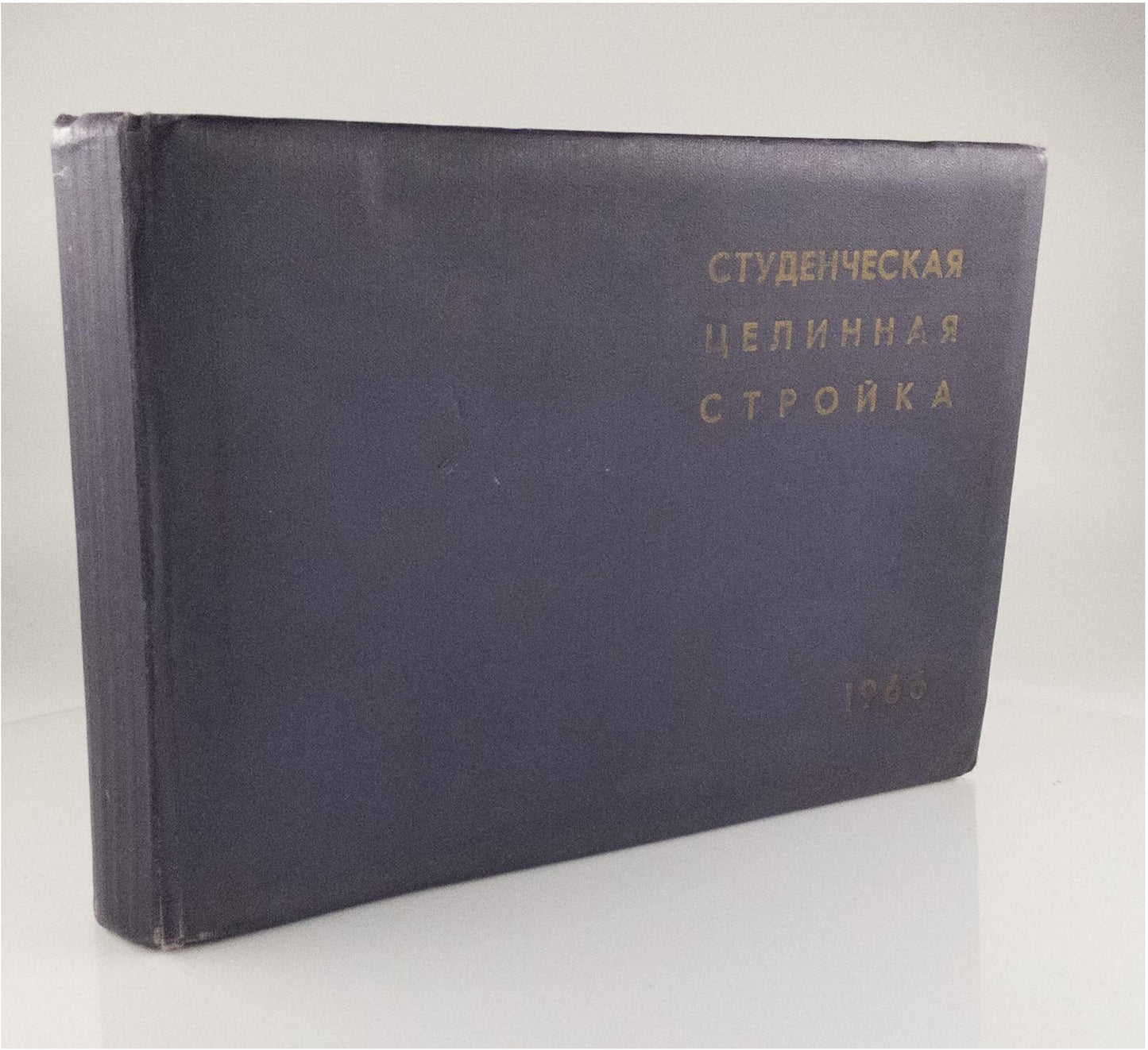Student Construction on the Virgin Lands. Rare photoalbum.
Student Construction on the Virgin Lands. Rare photoalbum.
Couldn't load pickup availability
[Student Construction on the Virgin Lands]. Studencheskaia Tselinnaia Stroika.
N.p., 1966.
Oblong 4to, 32 photos.
In original cloth.
In good condition, lightly rubbed and soiled.
Rare photoalbum.
The tradition of student construction brigades in the Soviet Union was a major youth labor movement with early roots in the 1920s, but it was officially formed in 1959 at the Physics Department of Moscow State University. These brigades, known as stroyotryads, were temporary teams of university students organized by the Komsomol (Communist Union of Youth) to work – primarily during vacation periods – on construction and agricultural projects across the USSR. By the mid-1960s, the movement had expanded into a nationwide phenomenon.
The work was often physically demanding and technically skilled, involving infrastructure development, agricultural labor, and restoration efforts. Beyond the labor itself, the movement fostered ideological education, camaraderie, and opportunities for travel and cultural exchange. Student brigades played a key role in large-scale projects such as the construction of the Baikal-Amur Mainline (BAM) railway in the 1970s, symbolizing the contribution of Soviet youth to national development. From 1959 until the dissolution of the Soviet Union in 1991, millions of students participated. Despite the physically demanding nature of the work and often harsh living conditions, many participants later recalled the experience with warmth and nostalgia.
As noted in the short preface to this photoalbum, it is a 'photo-narrative about the 1966 Virgin Lands campaign', documenting the work of '30,000 students across Kazakhstan' – showcasing both moments of construction and everyday student life, including amateur performances and leisure. Each page features a short caption alongside an original mounted photograph. The overall design and concept of the book are reminiscent of the iconic Soviet constructivist photobooks of the 1930s.
Interestingly, participants included not only young people from across the Soviet republics, but also from abroad. This album, for example, includes photographs of a student from Lithuania and others of a girl and several women working as cooks from Czechoslovakia. Furthermore, one of the photographs depicts a tent camp, with each tent marked by the abbreviation of the country its occupants came from – including the German Democratic Republic (GDR), the Polish People's Republic, and the Hungarian People's Republic. Research shows that in the 1960s and 1970s, student brigades promoted Soviet internationalism by involving youth from both socialist and non-socialist countries in joint labor and cultural activities.
Several photographs in the album are dedicated to a monument titled 'Glory to the Soviet People – Conquerors of Space'. Although no further information about the monument is provided, and no other images accompany it, the presence of Valery Bykovsky – a renowned Soviet cosmonaut – suggests that the monument may have been dedicated in his honor. During his multi-day spaceflight aboard Vostok-5 in June 1963, Bykovsky completed his mission and landed near the village of Karatal in northern Kazakhstan. It is known that the monument was built with the funds and efforts of local Komsomol members and youth, and it has been preserved to this day.
















